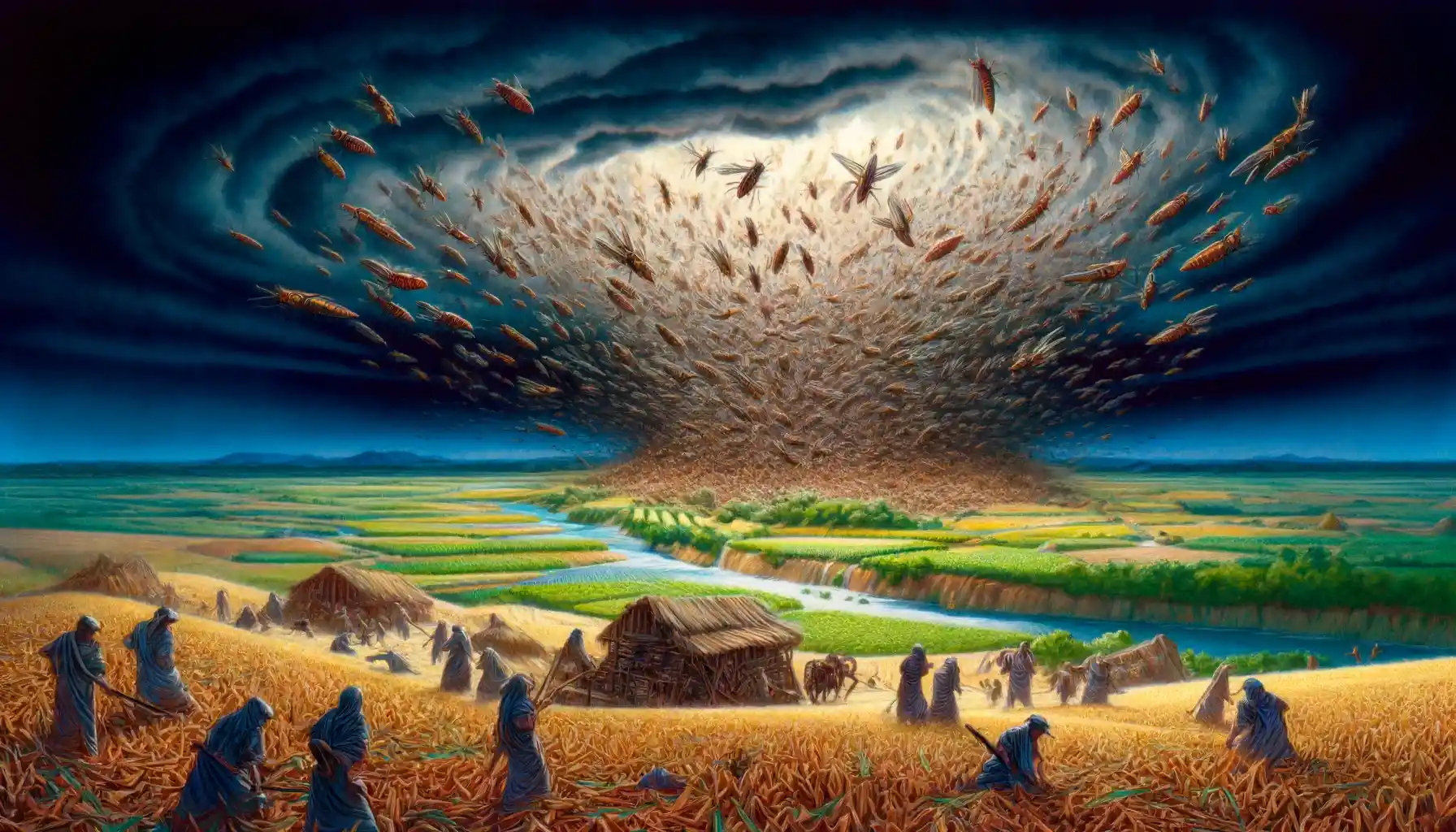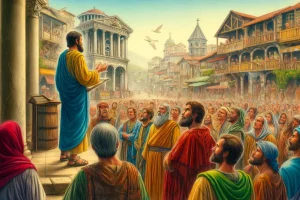
The Book of Joel
The Book of Joel is a compelling text in the collection of the Twelve Minor Prophets in the Hebrew Bible. Here are some key facts about this book:
- Authorship: The book is attributed to the prophet Joel, although specific details about his life and the exact timing of his prophecies are not well documented.
- Date: The dating of Joel is widely debated among scholars, with proposed dates ranging from the 9th century BCE to the post-exilic period around the 5th century BCE.
- Structure: Joel is a relatively short book, consisting of only three chapters in the Hebrew Bible and four chapters in the Christian Old Testament (due to a chapter division difference).
- Themes:
- The Day of the Lord: Joel focuses significantly on the “Day of the Lord,” a time of both dreadful judgment and great blessing, depending on one’s relationship with God.
- Divine Judgment and Natural Disaster: Joel interprets a locust plague and severe drought affecting Judah as a warning from God, urging the people to repent and return to Him.
- Promise of Restoration and Blessing: Following repentance, Joel prophesies future blessings, including the outpouring of God’s Spirit on all people, agricultural abundance, and national restoration.
- Key Verses:
- Joel 2:25: “I will repay you for the years the locusts have eaten…”
- Joel 2:28-32: This passage predicts the outpouring of the Holy Spirit and is cited by the Apostle Peter in Acts 2 on the Day of Pentecost.
- Literary Features: Joel is noted for its vivid imagery, especially in describing the locust plague, and its poetic style, which powerfully conveys both the threat of judgment and the promise of renewal.
- Theological Significance: Joel emphasizes the themes of repentance, divine mercy, and the universal reach of God’s spirit, highlighting a shift from nationalistic to more universal concerns in prophetic religion.
The Book of Joel is an evocative prophetic work that addresses both immediate natural disasters and the broader spiritual implications for the people of Judah. Characterized by its apocalyptic imagery and a profound understanding of repentance and divine mercy, Joel’s prophecies are both timely and timeless. Here’s a detailed analysis of the Book of Joel, exploring its context, content, themes, and theological contributions.
1. Historical Context
The exact historical setting of Joel is not specified within the text, leading to varied scholarly interpretations about its date, ranging from the early pre-exilic period to the post-exilic era. Joel’s prophecies come at a time when Judah faces a calamitous locust plague, which he interprets as a harbinger of the “Day of the Lord”—a concept central to his prophetic messages. This disaster serves as a backdrop for reflections on national disaster, communal lament, and divine judgment.
2. Structure and Content
The Book of Joel is divided into several sections, though it is brief:
- Chapter 1 describes the locust plague in vivid detail and calls for national lament.
- Chapter 2 expands on the implications of the locust plague, interpreting it as a sign of the coming “Day of the Lord.” Joel calls for repentance and communal return to God, promising divine mercy and restoration if the people of Judah repent.
- Chapter 3 (or Chapter 4 in some Christian bibles) shifts to a more eschatological focus, describing the eventual divine judgment on the nations and the full restoration of Judah.
3. Major Themes
- The Day of the Lord: Joel’s prophecy revolves around the imminent “Day of the Lord,” depicted as a time of both terrifying divine judgment and a moment of renewal and restoration for those who return to God.
- Repentance and Restoration: Central to Joel’s message is the call to heartfelt repentance, which he promises will lead to material restoration (like the recovery of years lost to the locusts) and spiritual renewal, including the outpouring of God’s spirit.
- Divine Judgment and Hope: Joel juxtaposes the themes of judgment against the nations and the restoration of Israel, illustrating a dual aspect of God’s intervention in history.
4. Literary Features
Joel employs a range of poetic techniques, including vivid descriptions, lamentation, and prophetic exhortation. His use of natural imagery—locusts, fire, and desolation—serves to communicate the severity of the divine judgment and the potential for renewal. The rhetoric is designed to evoke emotional responses from the audience, driving them towards reflection and action.
5. Theological Contributions
- Universalism: Joel’s prophecy of the Spirit being poured out on all people (Joel 2:28-29) marks a significant expansion of the prophetic vision to include all of humanity, not just the people of Israel.
- Interpretation of Natural Disasters: Joel’s interpretation of the locust plague as a divine warning reiterates the prophetic tradition of interpreting historical events as manifestations of divine will, encouraging a theological reading of natural and national disasters.
- Eschatological Visions: The vivid descriptions of cosmic events in Joel have contributed to Jewish and Christian eschatological thought, influencing subsequent apocalyptic literature.
6. Enduring Relevance
Joel’s messages of impending judgment and the promise of divine mercy resonate with contemporary themes of crisis and hope. His vision of a universally accessible relationship with God anticipates themes of inclusivity and redemption that are central to later Christian theology.
In summary, the Book of Joel provides a compelling synthesis of immediate historical crisis and profound theological insight. It invites readers to contemplate the nature of divine judgment, the power of repentance, and the promise of universal redemption, making it a profound text for both communal and personal reflection.
Tag:apocalyptic imagery, communal lament, cosmic events, Day of the Lord, divine judgment, divine mercy, eschatology, Joel, Judah, locust plague, minor prophets, natural disaster, Old Testament, outpouring of the Spirit, prophecy, prophetic literature, repentance, restoration, theological insight, universalism



